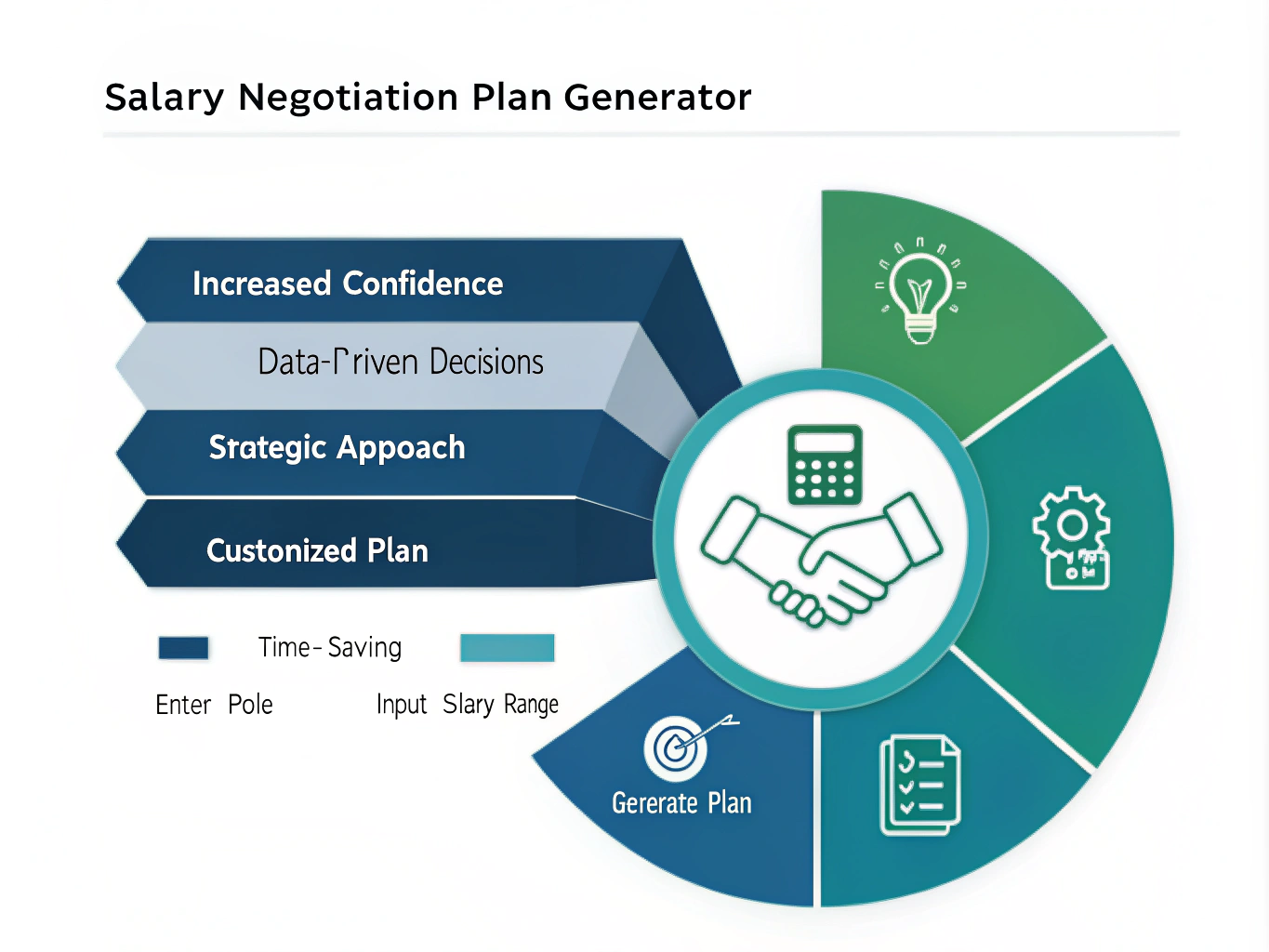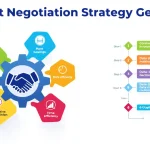Is this tool helpful?
How to Use the Salary Negotiation Plan Generator Effectively
This easy-to-use tool helps you create a personalized salary negotiation plan tailored to your specific job offer. To get the best results, follow these steps carefully:
- Enter the Job Role: Provide the exact position title you are negotiating for. Examples include “Product Manager” or “UX Designer”.
- Input the Offered Salary: Enter the current salary offer in USD without commas or symbols. For example, use 65000 or 72000.
- Specify Your Desired Salary: Input the salary you want to request in USD. Examples might be 78000 or 82000.
- Generate Your Negotiation Plan: Click the button to create a complete strategy that includes market data, talking points, and responses to potential objections.
- Review and Apply: Carefully read the plan, understand each step, and use provided scripts and tips to confidently negotiate your salary.
Ensure your inputs are as accurate and specific as possible. This precision helps the generator produce a more effective and customized plan suited to your negotiation.
What Is the Salary Negotiation Plan Generator and How It Helps You
The Salary Negotiation Plan Generator is a web-based tool designed to equip you with a thorough, actionable strategy for negotiating your salary. It synthesizes your inputs — including your job title, current offer, and target salary — with market data and expert techniques to create a negotiation roadmap.
Negotiating salary can be daunting, but having a clear plan that covers research-backed arguments, example dialogues, and ways to overcome objections improves your confidence and chances of success. This tool provides a structured, personalized blueprint that saves you time and prepares you to negotiate effectively.
Key Benefits of Using the Salary Negotiation Plan Generator
- Market Insight: Access up-to-date salary ranges tailored to your role to back your request with facts.
- Clear Negotiation Steps: Follow a step-by-step plan that guides you through the conversation.
- Objection Handling: Prepare responses to common employer concerns to stay composed and persuasive.
- Tailored Advice: Receive a customized plan based on the salary figures you provide.
- Time Efficiency: Save hours of research and planning with an instant, ready-to-use strategy.
Practical Uses for the Salary Negotiation Plan Generator
You can apply this tool across different salary negotiation situations. Here are some common examples:
1. Negotiating a New Job Offer
Use the generator to craft a response that both acknowledges the offer and opens a constructive dialogue for increasing your salary.
Example Scenario:
You are offered a Customer Success Manager role with a $58,000 salary, but you want $65,000.
Your plan will include a script like this:
“Thank you for the offer for the Customer Success Manager position. I’m excited about joining your team. Given my experience improving client retention rates by 15%, I believe a salary of $65,000 better reflects my value. Can we discuss this further?”
2. Preparing for Annual Salary Reviews
Generate a plan to highlight your accomplishments and justify your raise request professionally and persuasively.
Example Scenario:
You currently earn $55,000 as a graphic designer and want to negotiate a raise to $62,000.
Expected negotiation line:
“Over the past year, I have led three major projects that improved brand recognition by 20%. I’d like to discuss a salary adjustment to $62,000 in line with my contributions and market rates.”
3. Navigating Career Changes
When switching industries or roles, this tool helps you communicate transferable skills and justify your desired salary.
Example Scenario:
You are moving from customer support to a Business Analyst role. Offered $60,000 but you want $67,000.
Suggested negotiation approach:
“I appreciate the offer for the Business Analyst position. While new to this role, my five years in customer support have honed my analytical and problem-solving skills. Based on this and industry data, I believe $67,000 is a fair salary.”
4. Handling Counteroffers
If you receive competing job offers, this tool helps you negotiate with your current employer to match or exceed external offers without risking goodwill.
Example Scenario:
You earn $85,000 as an engineer and received a $95,000 offer elsewhere but prefer to stay if your employer can match it.
Negotiation suggestion:
“I appreciate my time here and the opportunities I’ve received. I have an offer of $95,000 from another firm, which reflects current market rates. I’d like to discuss whether my compensation here can be adjusted to match that.”
Additional Tips for Effective Salary Negotiation
- Lead with enthusiasm: Express your excitement about the role before discussing salary.
- Use data confidently: Reference market salary statistics to support your request.
- Highlight your unique value: Focus on specific skills and achievements that justify your salary target.
- Maintain professionalism: Keep the conversation positive and collaborative.
- Prepare for objections: Think ahead about common pushbacks and your responses.
FAQs About the Salary Negotiation Plan Generator
How reliable is the salary data in the generated plan?
The tool uses regularly updated data from reputable salary databases. Still, you should consider factors like location and industry when comparing figures.
Can this tool help negotiate benefits besides salary?
While primarily focused on salary, the strategies apply to negotiating bonuses, stock options, and other compensation aspects.
Should I use the sample negotiation scripts exactly as shown?
Use the scripts as a guide. Personalize them so they sound natural and fit your communication style.
When should I use this tool?
Use it whenever you prepare for a salary discussion: job offers, raises, reviews, or career changes.
Does this tool guarantee I will get the salary I want?
The Salary Negotiation Plan Generator gives you a strong plan and approach, but final outcomes depend on your discussions and employer flexibility.
Important Disclaimer
The calculations, results, and content provided by our tools are not guaranteed to be accurate, complete, or reliable. Users are responsible for verifying and interpreting the results. Our content and tools may contain errors, biases, or inconsistencies. Do not enter personal data, sensitive information, or personally identifiable information in our web forms or tools. Such data entry violates our terms of service and may result in unauthorized disclosure to third parties. We reserve the right to save inputs and outputs from our tools for the purposes of error debugging, bias identification, and performance improvement. External companies providing AI models used in our tools may also save and process data in accordance with their own policies. By using our tools, you consent to this data collection and processing. We reserve the right to limit the usage of our tools based on current usability factors.







